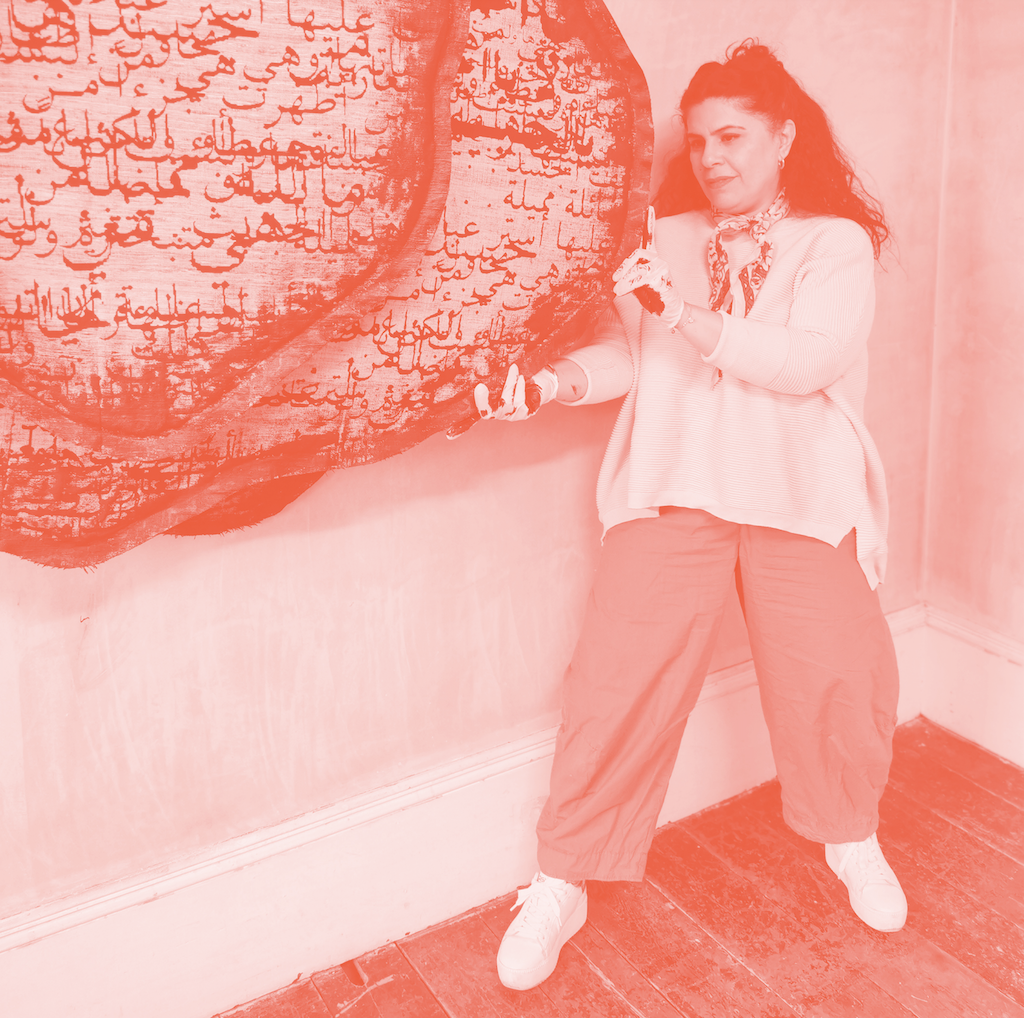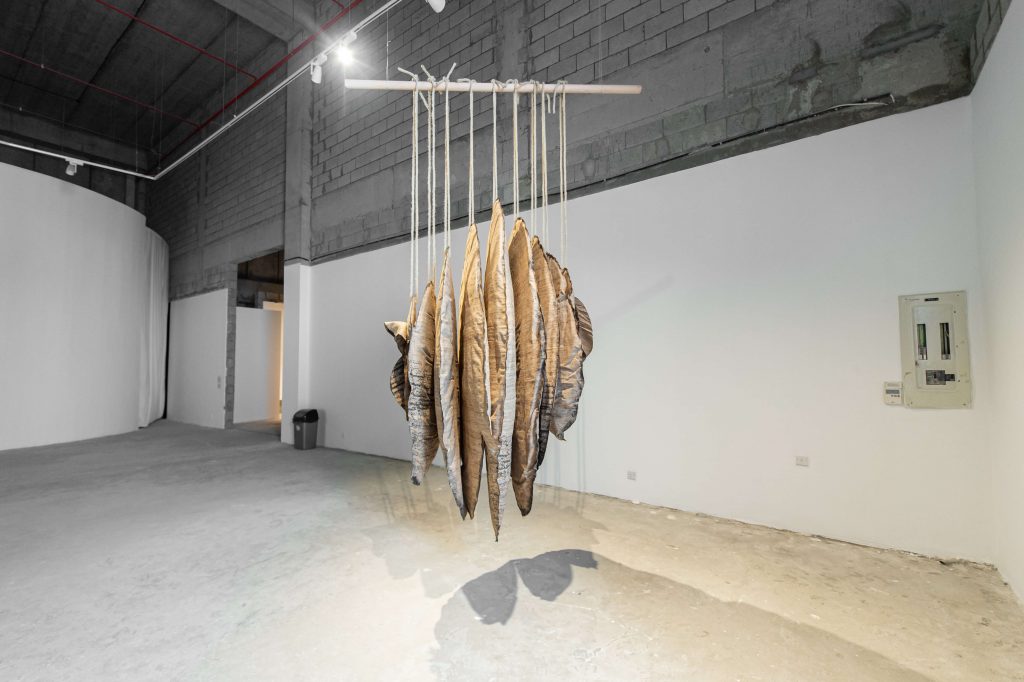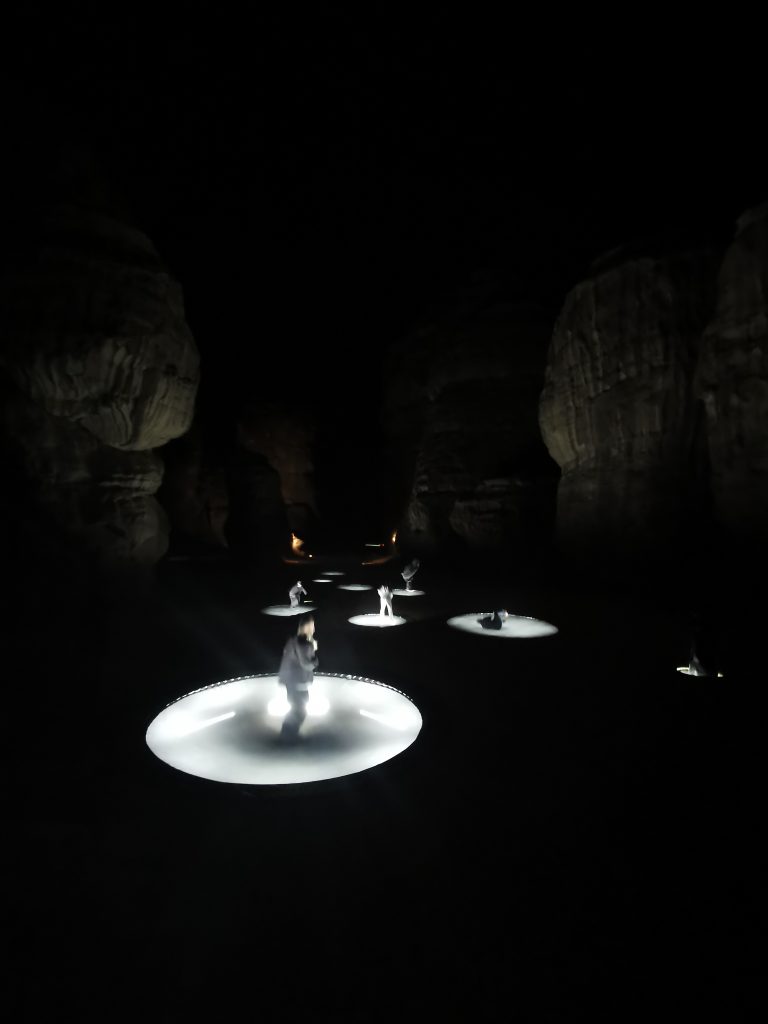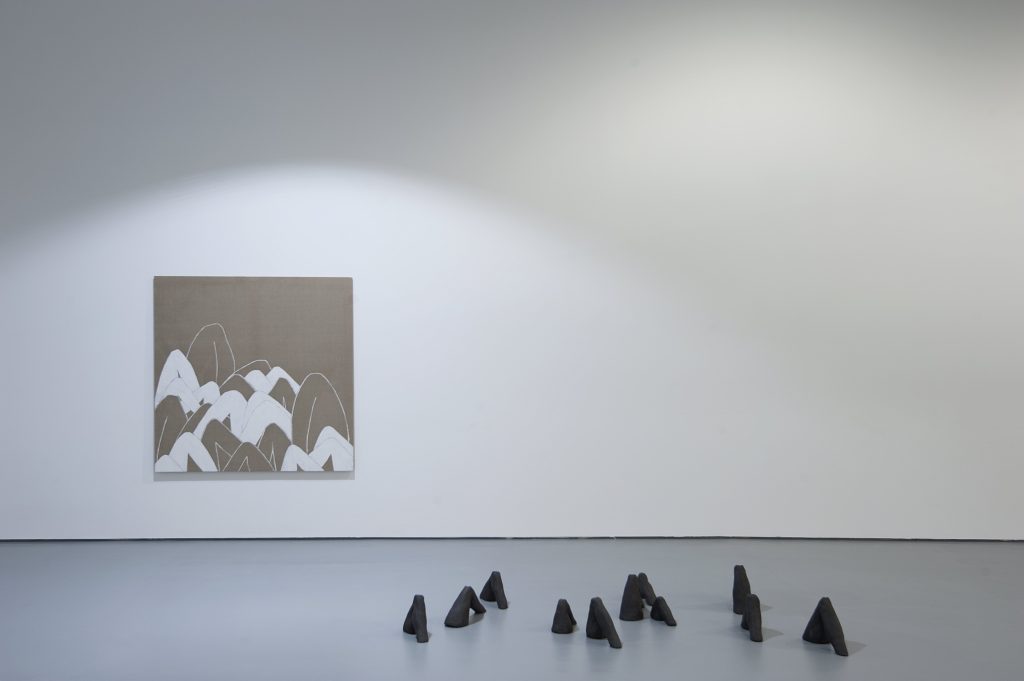
Few artists understand metamorphosis as keenly as Saudi artist Manal Al Dowayan. Long invested in interrogating the gender-biased customs that impact the condition of women in Saudi Arabia, Al Dowayan is a sensitive yet critical witness to the cultural metamorphosis engulfing the Kingdom. Her practice, formally speaking, regularly shifts and evolves—from the assertive black and white photographic portraits of highly skilled working women in her early I Am series (2005), to the research-driven Crash (2014) documenting media silence on fatal road accidents involving commuting women school teachers. Equally recognized for her work in sound, neon, and sculpture, Al Dowayan is perhaps best known for the participatory installations Suspended Together (2011) and Esmi-My Name (2012), the result of workshops offering channels for thousands of women in the Kingdom to address unjust social customs.

Ephemeral Witness, Courtesy the artist and IVDE Gallery.
You are internationally known for interrogating the gender-biased customs that impact the condition of women in Saudi Arabia, especially through your earlier black and white photography. Can you expand on your practice and how your work evolved over the years?
I am constantly shifting my focus when it comes to the ideas that feed into my artmaking. These ideas are closely linked to my personal experience as a woman and as an artist … while existing in a highly politicized context. The longest running investigation I have had in my practice was with my struggle to be seen and for me to see also. I have constantly challenged myself with materials, subject matter and narratives. I embrace how my ageing influences the shifts in my thinking. I see many of my artworks mutate from simple life experiences into historical markers for my generation of women, all stemming from a simple instinct to express myself or more simply put; I just want to tell an alternative narrative.

Now You See Me, Now You Don’t, 1/22/2020, Desert X, Photo by Lance Gerbe, Courtesy of the artist.
You had a commissioned site-specific, immersive work titled Now You See Me, Now You Don’t right before the global lockdown as a part of Desert X, can you talk a bit about the process and the project there?
Now You See Me, Now You Don’t (2020) was a sight specific work, and when I saw the site, early in the process of making the artwork, I knew my artwork needed to be invisible! I couldn’t compete with the beauty of the landscape of the northern Saudi Arabian city of Al-Ula and its Nabatean tombs. So, my artwork really didn’t have a physical presence. I also leaned on my investigation into participatory art, which is a form of art I have explored for over 16 years. In the end I placed 12 trampolines in the heart of a mountain crevice and invited the general public to activate the work using their bodies to either jump or lay on the trampolines. The concept of the artwork is meant to bring attention to climate change and more specifically to the depletion of natural water reserves in my country.
You had a commissioned site-specific, immersive work titled Now You See Me, Now You Don’t right before the global lockdown as a part of Desert X, can you talk a bit about the process and the project there?
Now You See Me, Now You Don’t (2020) was a sight specific work, and when I saw the site, early in the process of making the artwork, I knew my artwork needed to be invisible! I couldn’t compete with the beauty of the landscape of the northern Saudi Arabian city of Al-Ula and its Nabatean tombs. So, my artwork really didn’t have a physical presence. I also leaned on my investigation into participatory art, which is a form of art I have explored for over 16 years. In the end I placed 12 trampolines in the heart of a mountain crevice and invited the general public to activate the work using their bodies to either jump or lay on the trampolines. The concept of the artwork is meant to bring attention to climate change and more specifically to the depletion of natural water reserves in my country.
How did you keep sane during multiple lockdowns? Were you in London the whole time?
Sane is overrated! Yes I was in London during the lockdowns and it was painful to be separated from my family and home. Still I comforted my homesickness by having video calls for birthdays and Eid holidays with my family back home and at the same time; I doubled down on work. I was attending meetings and participating in podcasts and seminars and forums and anything that kept me close to humans, even if it was just virtual, it still helped with the feeling I was part of a community. Now that lockdown is lifted, I have realized how important solitude was to my practice and now I struggle to recreate that kind of creative isolation.
If you could collaborate with any individual, living or deceased, who would it be?
I discovered Arabian philosophy pretty late in age, only because it was not taught in schools in Saudi Arabia, so I imagine having the Islamic philosopher Ibn Sina (Avicenna) as a collaborator would be insane. Maybe he could be a curator in this imagined scenario!
I have also always thought about the late Inji Aflatoun the Egyptian painter as a personality that was not fully understood and of course the late Zaha Hadid. Powerful women with a legacy to learn from.

Watch Before You Fall, 1/11/2019, Courtesy the artist and Sabrina Amrani Gallery.
Having graduated from RCA a few years back, do you see yourself in London or living anywhere else?
Who says you can only live in one place? I live in three cities: Dhahran, Dubai and London.
Is there anything you would have done differently?
I would have read more books in Arabic, I should have learned a 3rd language perfectly, and I wish I had understood feminism when I was younger.
Anything you are working on at the moment?
I am preparing to join the world post-pandemic and to learn to accept the new abnormal.




